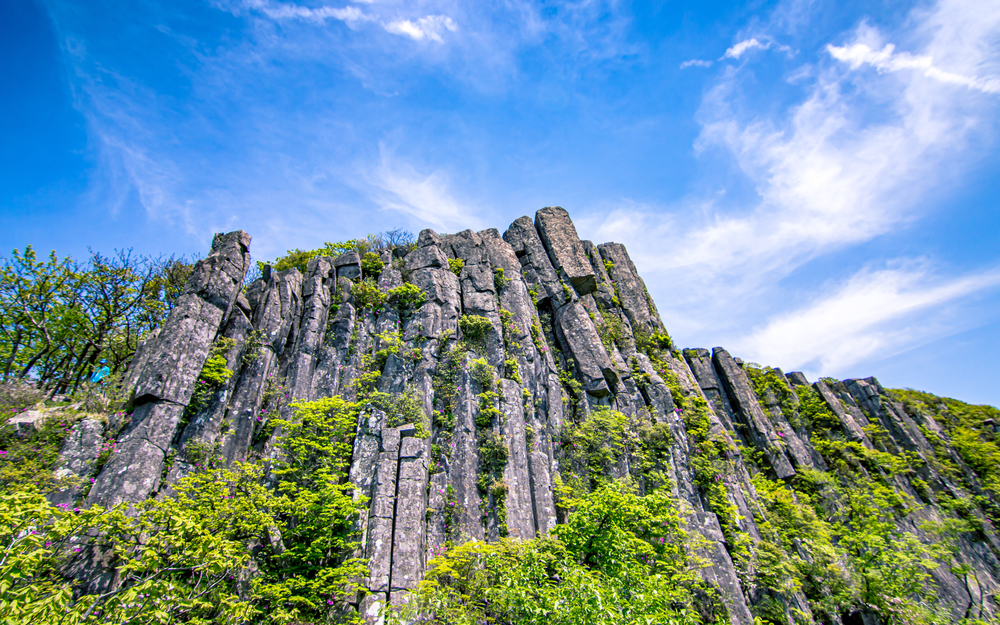Mudeungsan Overview
Mudeungsan National Park, known locally as 무등산국립공원 (Mudeungsan Gungnipgongwon), is located in South Korea, encompassing areas in Gwangju, Jeollanam-do, and Jeollabuk-do provinces. The park, established in 1972 and upgraded to national park status in 2012, covers approximately 29.22 square miles (75.68 square kilometers). Dominated by the majestic Mudeungsan Mountain, the park is a symbol of natural beauty and cultural significance, attracting visitors year-round to its rugged terrain and lush landscapes.
The centerpiece of Mudeungsan National Park is Mudeungsan Mountain itself, rising to a height of 1,187 meters (3,894 feet). The mountain is renowned for its distinct peaks, including Cheongwangbong, Jiwangbong, and Inwangbong, which form a stunning natural skyline. The rocky cliffs and unique columnar joint formations, such as Seoseokdae and Ipseokdae, are geological marvels that stand out amidst the verdant scenery. Visitors can also explore dense forests of pine, maple, and oak trees that blanket the slopes, creating a tapestry of colors, particularly vibrant in the autumn months.
Mudeungsan National Park is home to a diverse array of wildlife. Among its mammalian inhabitants, species like the Siberian roe deer and Korean hare can be spotted in the park’s quieter areas. Bird enthusiasts can enjoy sightings of species such as the Korean magpie, Eurasian sparrowhawk, and the striking common kestrel. The park’s ecosystems also support a rich variety of amphibians, reptiles, and insects, highlighting the region’s biodiversity. The floral diversity is equally impressive, with rare and endemic species like the Korean winter hazel thriving in the park’s unique environment.
The park offers several popular attractions and activities. Hiking trails, ranging from beginner-friendly paths to more challenging ascents, lead visitors through scenic forests and up to breathtaking vantage points. The summit of Mudeungsan provides panoramic views of the surrounding valleys and the city of Gwangju. Historic sites, including old Buddhist temples such as Jeungsimsa, add a cultural dimension to the experience, offering visitors a chance to connect with South Korea’s spiritual heritage.
Visitors to Mudeungsan National Park can engage with its beauty through hiking, photography, and nature observation. The well-maintained trails make it easy to explore the park’s diverse landscapes, while the tranquility of the temples offers a meditative retreat. Seasonal festivals, such as the autumn foliage festival, further enhance the experience, drawing both locals and international tourists.
Conservation remains a priority at Mudeungsan National Park. Efforts to preserve its unique geological formations and biodiversity have been largely successful. However, challenges such as increased visitor numbers and environmental degradation require ongoing management. The park authorities have implemented sustainable practices, including regulated access and community involvement, to ensure the park’s ecological integrity and cultural significance are protected for future generations.










































































